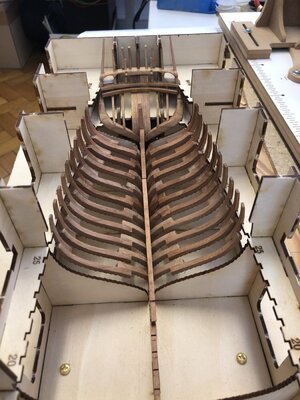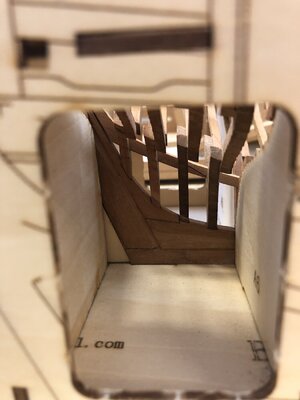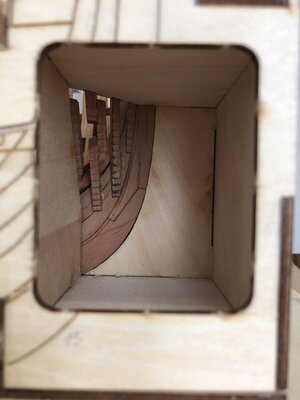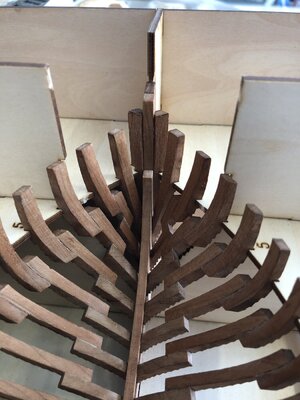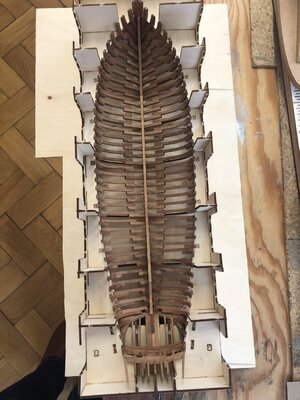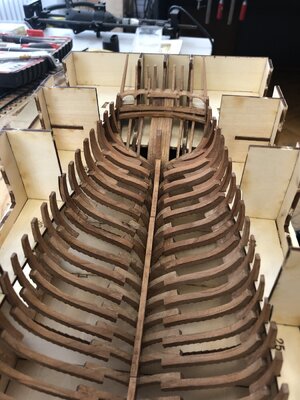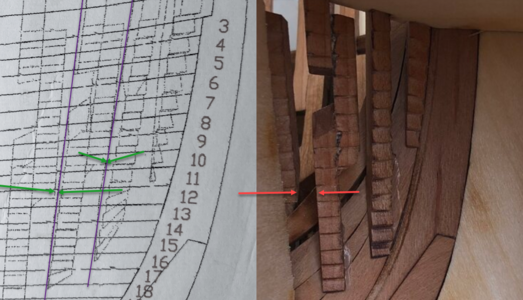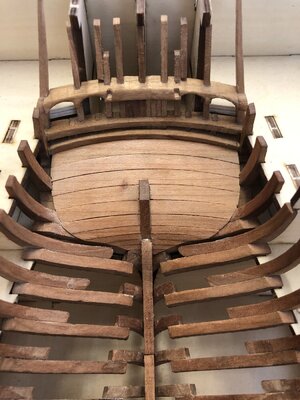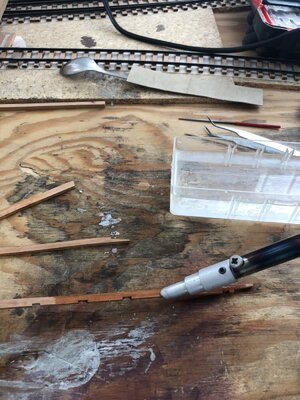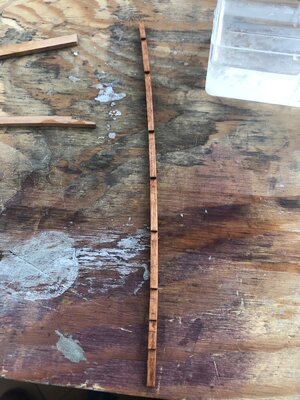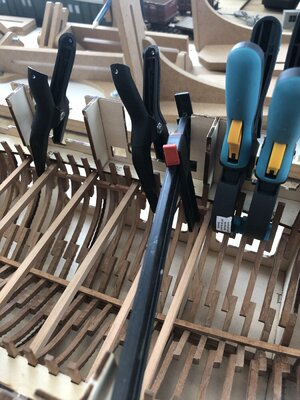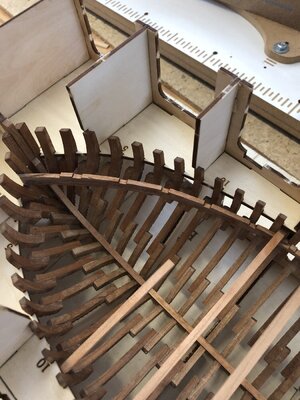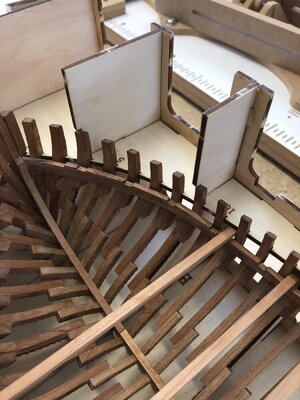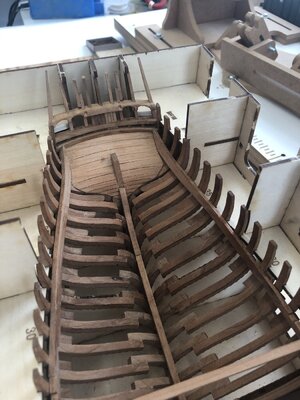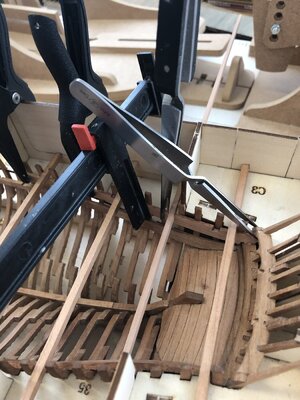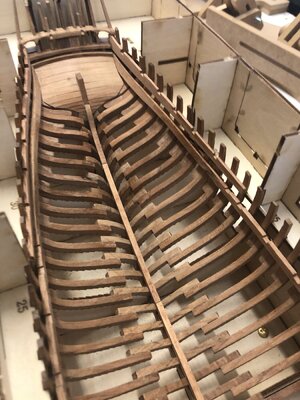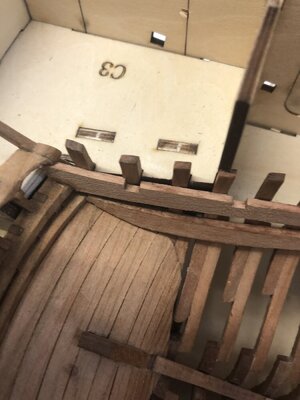Your stern section looks very good, but is it on purpose that the lower transom is not connected to the side counter timbers?
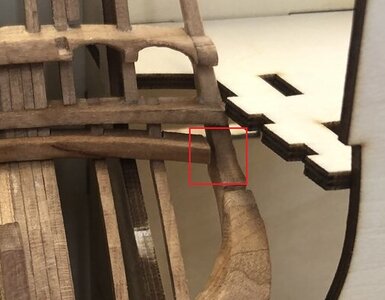
And one more thought: I'm not sure if it is a good ar bad idea but I think I would have cut a little of the keel at a later stage instead of adding extra wood to the stern post. The angle of the stern post would be slightly wrong either way and nobody would be able to see if the ship was 1 mm shorter

And one more thought: I'm not sure if it is a good ar bad idea but I think I would have cut a little of the keel at a later stage instead of adding extra wood to the stern post. The angle of the stern post would be slightly wrong either way and nobody would be able to see if the ship was 1 mm shorter





